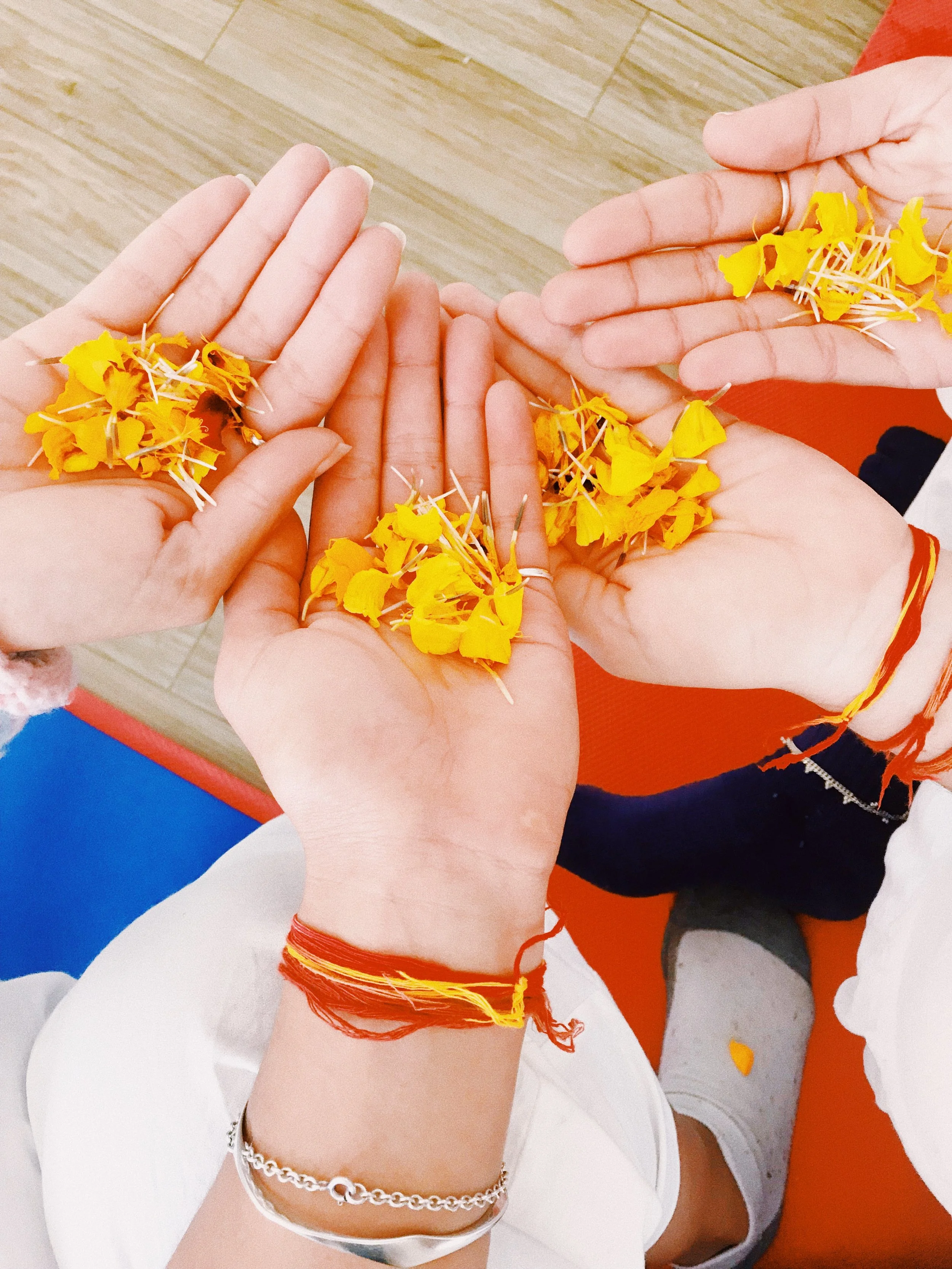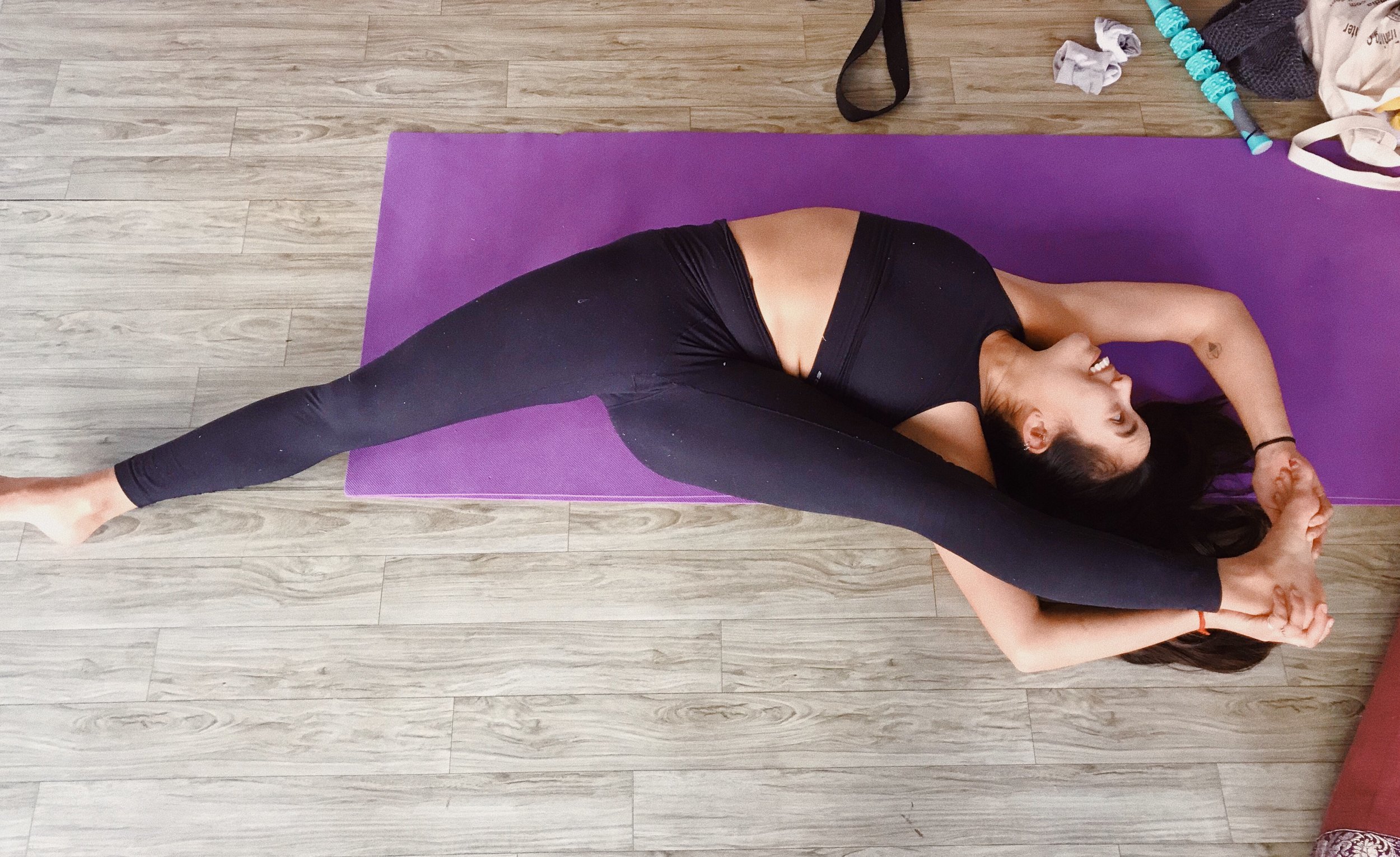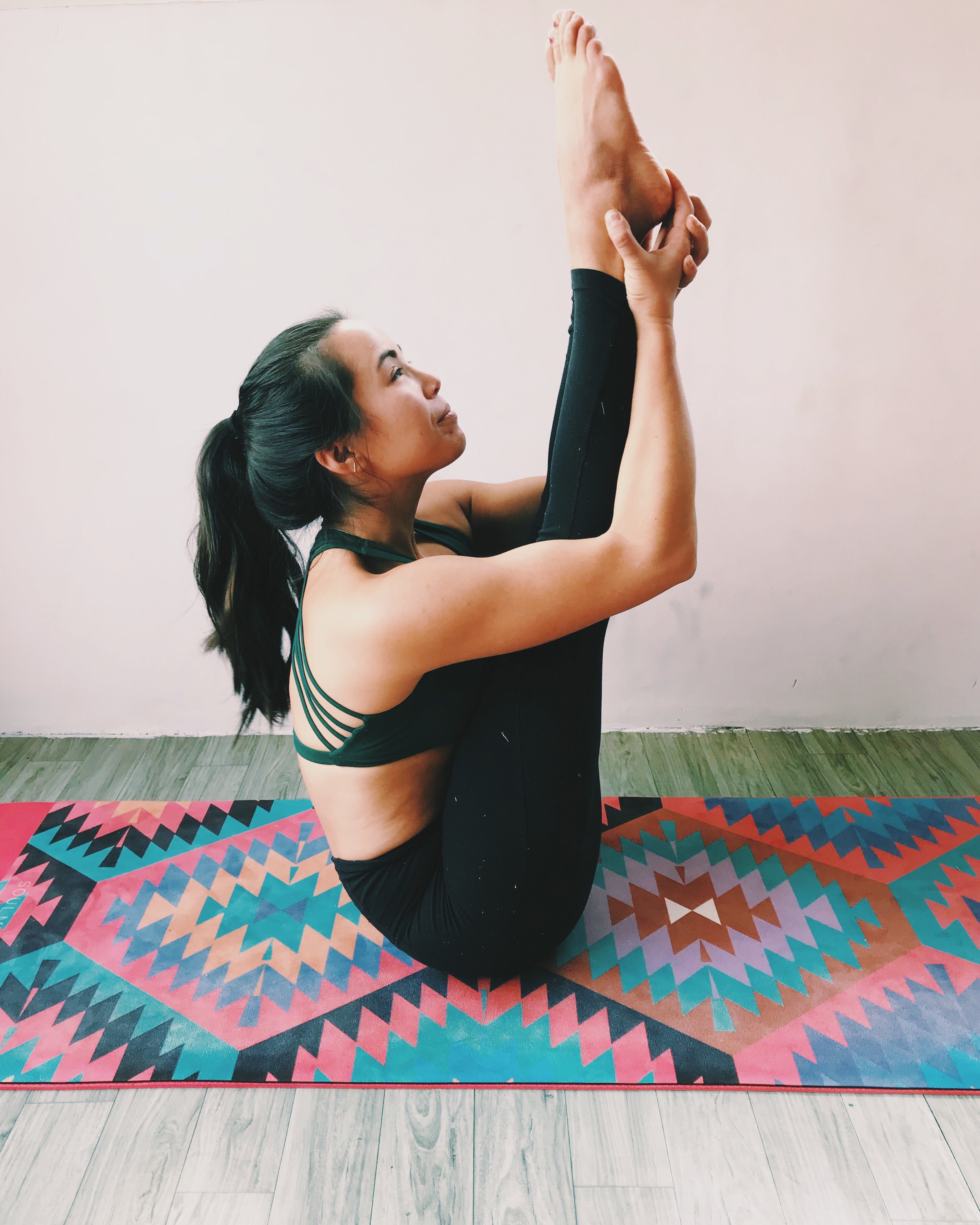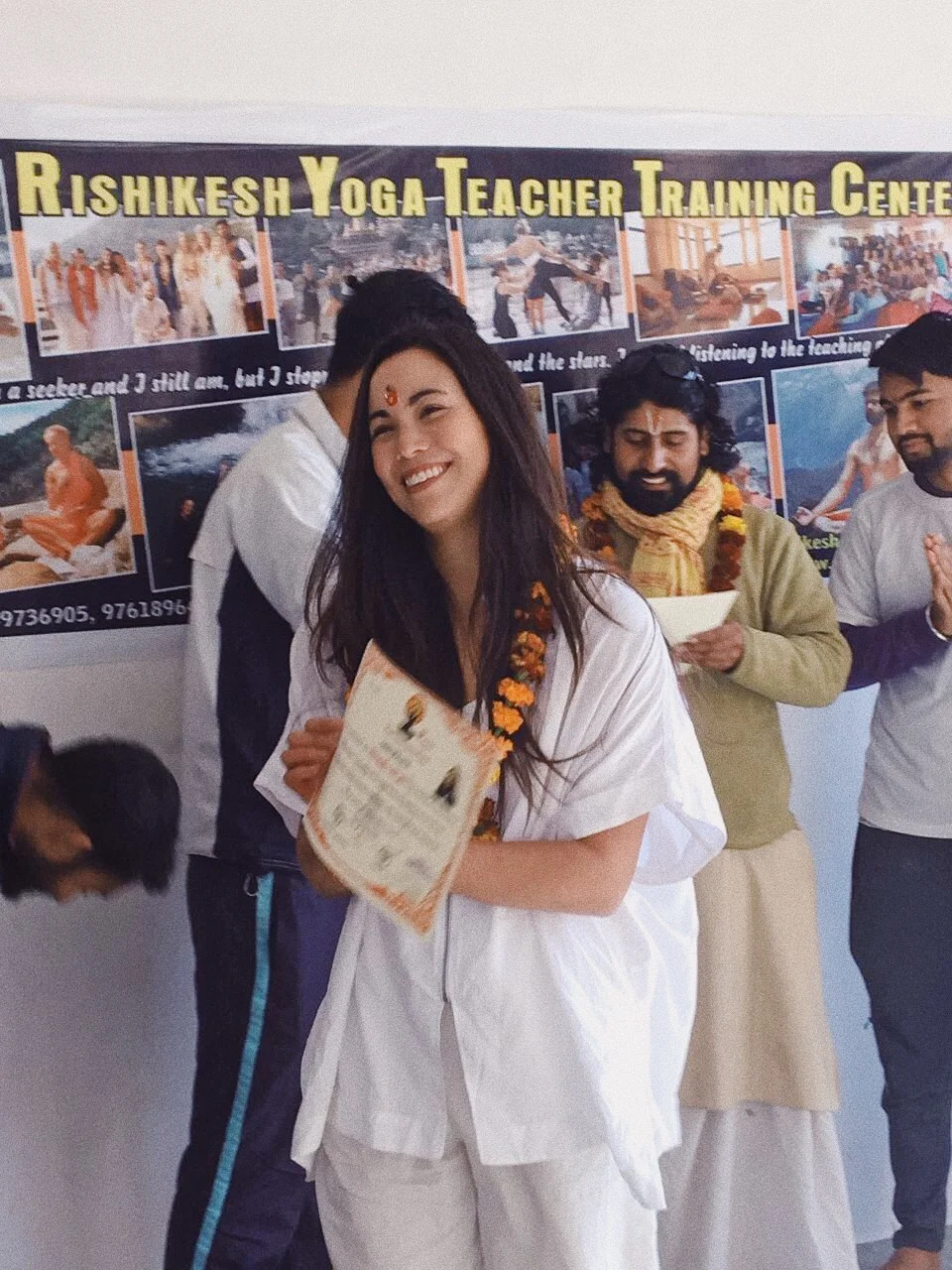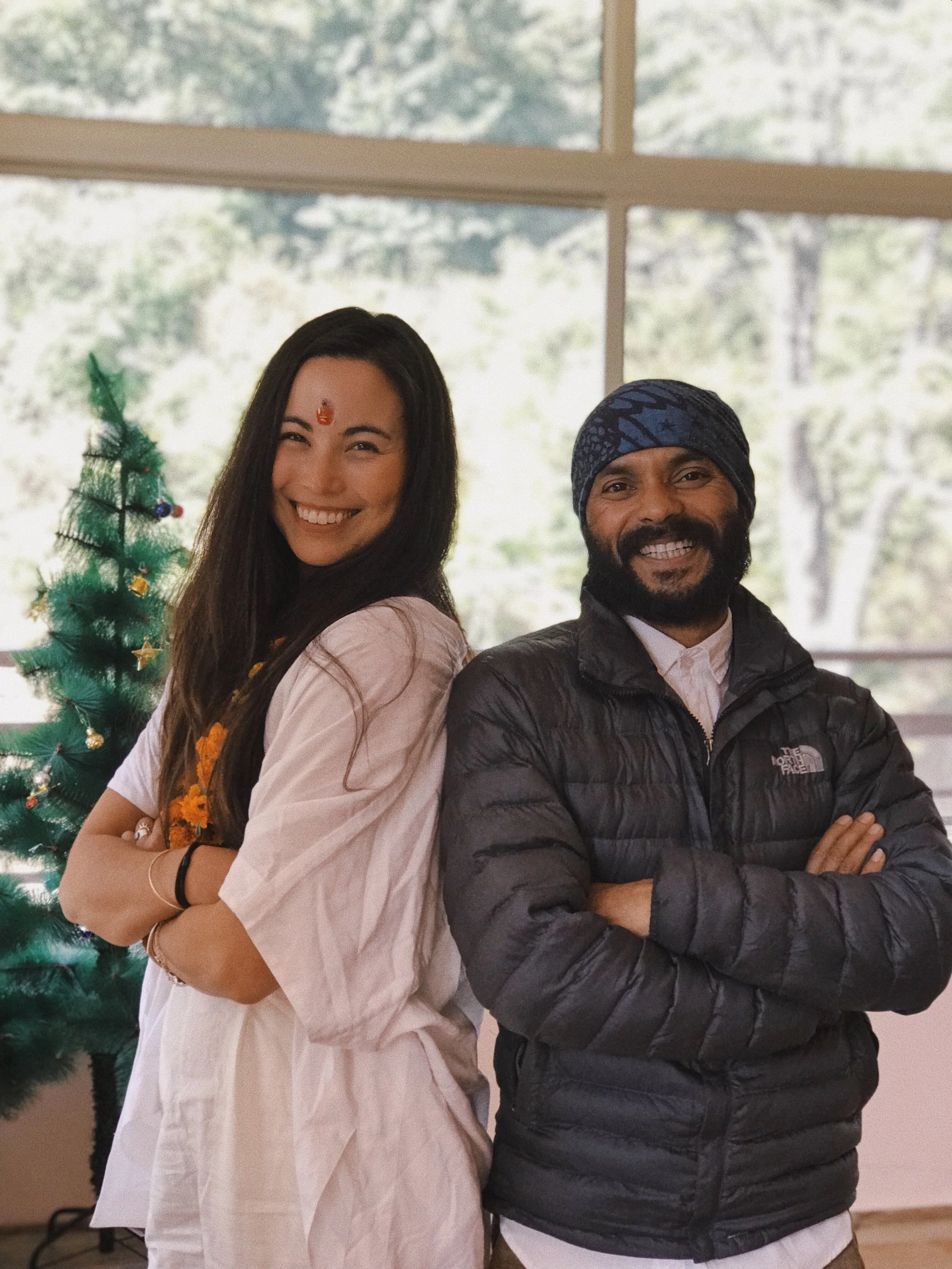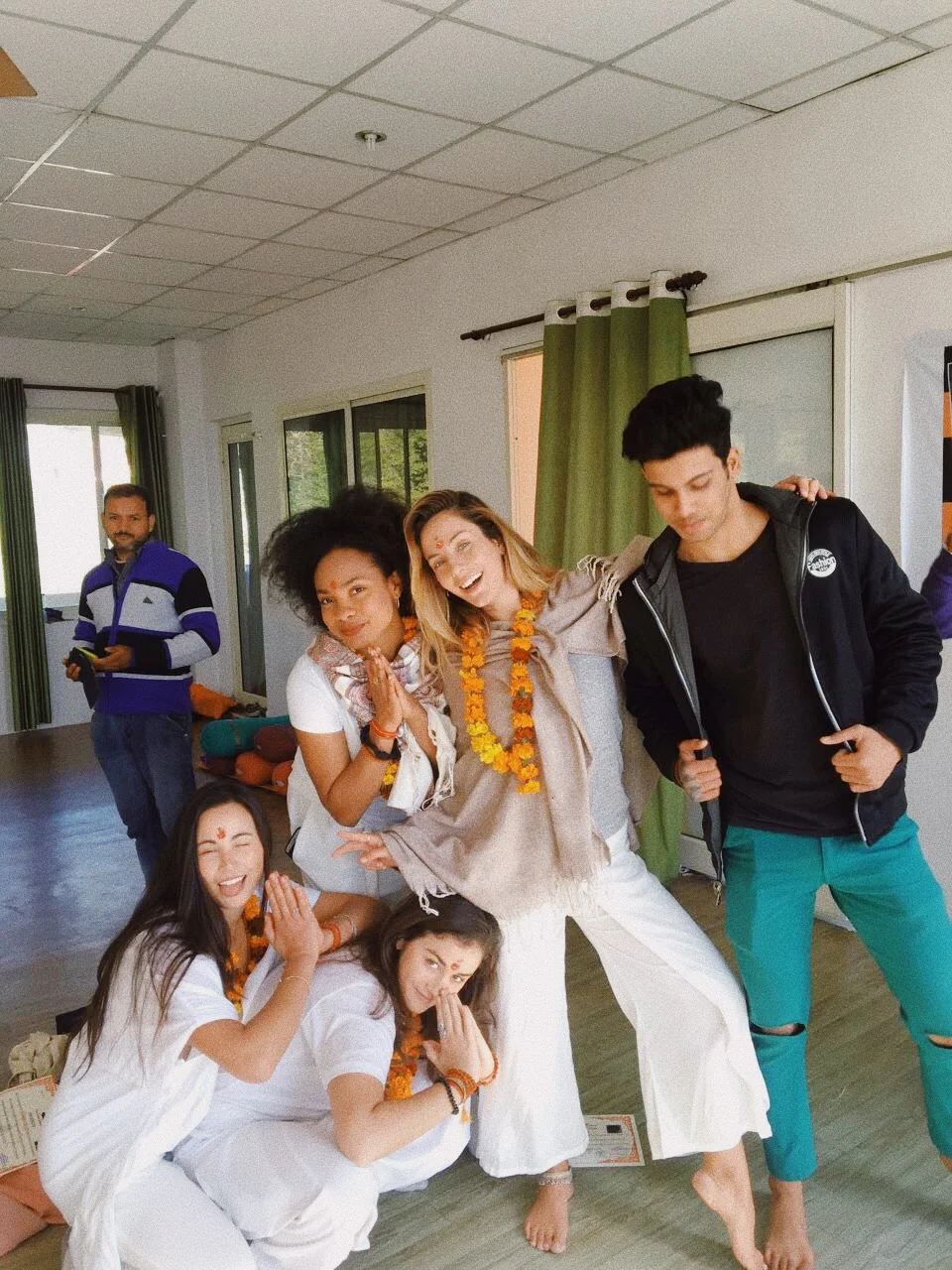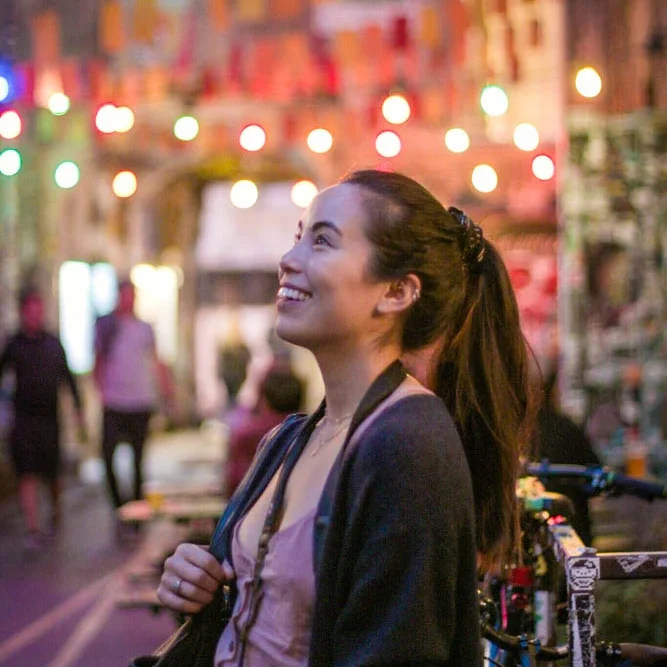Are You Considering Yoga Teacher Training in India? Read This.
EDIT (November 27, 2020): As we know, this year it’s difficult and/or nearly impossible to travel due to the COVID-19 pandemic. As a result, many yoga teacher trainings have had to move online in order to uphold health and safety measures. If you had your heart set on a yoga teacher training in India or elsewhere, it might nor be possible this year. However, there is still an opportunity to become a certified yoga instructor right from the comfort of your own home…and at a discounted price! Book Yoga Retreats is having a flash sale on November 27th, 2020 (aka Black Friday aka today!). For up to 50% off, you can book an online yoga teacher training using this link. Even though the trainings are online, all courses offer a valid certificate for Students who complete the training to be eligible to register with Yoga Alliance as Registered Yoga Teachers (RYT®). Become a yoga teacher from the comfort of your own home, just in time for the new year! You could even start teaching your own online classes :) Book a course now!
******
Earlier in 2019, I completed my 200-hour yoga teacher training in Rishikesh, India. I wanted to write about the teacher training, but I didn’t start drafting this post until very recently. This was partially because I needed time for everything to sink in and to process it all, and partially because the training kind of felt like a scam.
Let me explain.
Right when I left the training, I felt relief. Of course, I was so happy to have made amazing friendships and connections during my course, but there was undoubtedly a weird energy throughout the process. There were a lot of things that felt off. It seemed like the teachers didn’t really care about whether or not we were learning, the curriculum was all over the place, and many of the male teachers would flirt and/or make advances on the female students (which was 90% of the class).
Back in October, I was in Bali. I had the option of taking my yoga teacher training at the yoga hostel I was staying at in Canggu. But after traveling through Europe for six months beforehand, I didn’t feel ready to take on a three-week yoga teacher training course. What I needed was R&R, to get back in touch with my body and mind, and just be a yoga student again. The opportunity for the Bali training came and went, but getting my teacher certification was still on my mind. Since I wasn’t so far from Rishikesh, India, the birthplace of yoga, I figured going there for my teacher training would be a more authentic experience.
Researching Yoga Teacher Training Centers in India
I started looking for YTTC’s through BookYogaRetreats.com, which not only lists retreats but also yoga teacher trainings around the world. I emailed at least ten different centers, looked at the curriculums, talked to other teachers who had undergone a course in India, and read some blog posts. I ended up going with a training that cost around $1,200. On BookYogaRetreats, you have to pay a deposit (I think I paid around $350) and the remaining balance you pay when you arrive at your selected school.
I felt excited but nervous not only for my training, but also because it would be my first time in India. I would take the course and get the “Real Deal” yoga teacher training experience, and then travel on my own for a few weeks afterwards. Easy!
The schedule looked something like this:
5am - Wake up for optional tea
6-7:15am - Meditation and pranayama (breath cleansing)
7:30-9am - Hatha yoga
9:15-10am - Breakfast
10:15-11:30am - Yoga philosophy
11:30-12pm - Break
12-3:30 - Lunch/break
3:30-5pm - Ashtanga yoga
5:15-6pm - Anatomy class
6:30-7:30 - Adjustment class
7:30pm - Dinner
9pm-onward - Study/bedtime
Pretty much all of the centers had schedules that looked like this one. The 5 am morning meditation was really intimidating at first, especially since we’d be waking before sunrise. To be honest, I never really got used to this—I like my sleep too much!
Arriving at the Ashram and Culture Shock
The first night I arrived to Rishikesh, I laid down on my bed and thought, “Wow, I’m here!” and then I thought, “Wow, this mattress is really uncomfortable!” After backpacking for seven months nonstop, my standards were already pretty low. Yet even for me, the bed situation was unsleepable (this isn’t a real word, btw). I sucked it up the first night and woke up the next morning with my entire body in pain.
A yoga teacher in Bali told me that staying in an ashram (a monastery where one stays in order to become more aligned with his/her spiritual self) is meant to be a bare-bones, no frills, and minimalistic living experience. But throw a bunch of Westerners in there and you’re likely to experience some culture shock.
I knew that sleep and recovery was an important part of this training and if I was going to be doing yoga for at least three hours a day, I needed have adequate quality sleep. I even tried out other people’s beds which were much softer. My roommate and myself just happened to get the worst beds. I was basically sleeping on a wooden picnic table with a blanket thrown over it.
I could overlook so many other details of the room that I was staying in: the room was freezing cold at night, the warm water worked for three minutes per day (if that), the floors were always dirty, the electricity went out almost every day. Fine. I could get over those things. But sleeping on picnic table wasn’t one of them. We spend half our lives sleeping, therefore I always try to prioritize that for my overall health. After a few uncomfortable days, the employees at the school found an extra old mattress to layer on top of the first one. It still wasn’t ideal, but I decided that this was as close as I would come to a comfortable sleeping situation. Sigh. At least my picnic-table-bed now had a little extra padding. “This is a yoga teacher training and not a yoga retreat,” the head teacher told us on the first night. Message, received.
Eating a Yogic Diet
During the training, breakfast, lunch, and dinner were included each day. Most of the meals were simple, vegan dishes and sometimes vegetarian. This was known as a Sattvic diet. A typical meal would include rice, beans or lentils, chapati (like and Indian pita bread), some veggies, and a soup. The meals usually had very little spice, sugar, fat, or salt added to them. The purpose of this diet, we were told, was to eat more simply and purely. I found it kind of nice to eat in this way at first, but by the end of week three (more on that below), I never wanted to eat lentils again! Foods/beverages that were also discouraged albeit still allowed: coffee, alcohol, sweets.
Meeting the Other Students & Making Friends
In my class, there were sixteen other students from Canada, Australia, Spain, U.A.E, Romania, India, Israel, Hong Kong, Austria, and the U.S. The first day of any training or intensive course like this is always a little awkward; you are immediately introduced to complete strangers that you’ll get to know very well and very quickly during only a few weeks.
Undoubtably, the best part of the training was making other yoga-loving friends. I’ve never really been in a situation with so many other people who have a similar relationship to yoga as I do. Most of my friends don’t do yoga at all, don’t like it, or just do it on occasion. But in a yoga teacher training, that's the one thing you all have in common. You’re all there in this little spiritual bubble to study yoga more deeply which is not normally something people in your every day surroundings want to do or have as great an appreciation for.
Yoga (Almost) Every Damn Day
Throughout the training there were easier days and more difficult ones. I’m not talking about physical training, necessarily. To be honest, it didn’t feel like we even did that much yoga! A lot of the classes were spent taking notes and listening to lectures, practicing adjustments on a partner, learning therapeutic stretches, and going really deep into the asanas. It’s not like the classes I learned at home which tend to be more flow-based. These classes broke down everything from the anatomy of yoga, tips on how to create sequences, pranayama (breathing techniques), and lots and lots of philosophy classes.
We came from all different backgrounds and levels of experience. Going into the training, I had practiced yoga on and off for nearly ten years and was a gymnast when I was in elementary school. I could do all of the asanas at an advanced level—no problem. But the thing that I wanted to work on was the spiritual component—the mind-body connection.
Stretching for split practice
Stillness Is My Weakness
I’m the type of person that always has to be doing something. It’s hard for me to just sit down and just “be.” Even while watching Netflix, I’m reading blogs, texting friends, and have approximately 15 tabs open on my browser. In a society that values productivity, I feel like I need my brain to be stimulated at all times and have a hard time being idle. Keeping myself busy like this has burned me out on numerous occasions, so learning stillness was (and still is) something I really wanted to work on during my 200-hour YTT.
During philosophy classes, I got impatient and bored and tired. I felt like a little kid who just wanted to nap or pull grass out of the lawn (we had classes outside). Plus, I didn’t understand why we were learning these airy-fairy theories that, to me, had no real substance in the Western world. I wanted these lessons to be straight forward and concrete and systemized. I wanted them to follow a syllabus like they said they would on the printed sheet that we were handed on the first day of class. Instead, we listened to our Swami talk at length about whatever happened to him that day or that year, referring to other students and places and times that I could barely connect with, let alone see the significance of.
This was culture shock, part two: I was so used to learning lessons that were straightforward and structured. I was expecting everything to be written down and handed to me in a binder of neatly organized lessons. Instead, our textbook had been photocopied from other yoga schools in Rishikesh and was extremely disorganized and out of order. The spoken lessons felt more interpretive and I didn’t fully agree with or understand everything that we were being taught in that moment.
Looking back, I thought I could improve my spirituality in one months time, but now I see how naive that was. It’s like saying, “I’m going to become an incredible tennis player in a month!” That’s not how it works, but I didn’t see that at the time. Spiritual growth and mindfulness takes SO MUCH EFFORT. And like anything else, it takes practice.
Balancing in Advanced Navasana (Boat Pose)
Turning Point: The Third Week
There was a point during the training when there was a shift in energy of all the students. Everyone was in an irritable state, gossiping, trash talking, snapping at one another, feeling discouraged about the lack of depth and structure in our daily lessons and practices. I saw it and felt it, too. I tried to separate how I felt towards the training and the negativity that was floating around.
I had wanted to get certified to teach yoga for so long since I was in my early 20s. And, I was finally in India doing just that. This is what I tried to focus on that week. Despite all the difficulties, the tears, the physical soreness, and a lack of quality sleep, I tried to focus on the good things that were happening, especially on the fact that I was finally getting certified—something I had wanted to do for so long.
Graduation day!
Seeing What You Want to See: A Story
During one of my final classes in the fourth week, we learned a breathing technique called nauli-kriya. YouTube it! For this technique, we had to lift our shirts up to expose our stomachs. Mind you, the course I took was in January and it was freezing cold on most days. I had worn a thick, heavy sweatshirt every day for every single class. When I lifted my shirt up, my pranayama/philosophy teacher came up to me, gave me a confused look, and said, “Huh. This whole time, I thought you were a fatty.”
*Cue laughter*
Later on after our graduation ceremony, that same teacher sat next to me at lunch and said, “You know when you think something is a certain way for a long time and then you realize it’s completely different? That’s what I thought about you,” referring to his mistaken perception of my actual body size. I thought it was funny as well, and obviously didn’t take it personally.
I really love that story and tell it constantly because it applies to a lot of situations in life. Everything we believe is based on perception. Even as you read my account of this yoga teacher training in India, you are taking in information and interpreting it in your own way. Negative, positive, or neutral. It’s up to you to choose how to see it.
Should You Take a Yoga Teaching Course in India?
This is entirely up to you. I personally don’t think that it matters where you take it—it depends on what you take from it. But, there are definitely some key differences when practicing in India versus practicing in other places around the world. If you are from a Westernized country, then you will likely experience some culture shock if you choose to do your training in India. But maybe that’s what you want!
Practicing in India vs. Practicing in Westernized Countries
Yoga didn’t become popular until it was brought to the Western world. The yoga most people know today is nothing like yoga in India. Westernized yoga focuses on the physical aspects and benefits—arguably changing its integrity by making it all about the asanas. That’s why there are so many types of yoga that focus on “building strength,” “powering your core,” or “detoxing your body.” These are all marketing terms that everyone buys into, including myself. While yoga can help support you in some of these things, be aware that this is not what yoga traditionally started as.
Yoga that originated in India goes deep into philosophy and spirituality. More that is left up to your own interpretation, and the lessons that you learn are not going to sink in overnight. As I said, it’s more about spirituality, which I think is much harder to learn than the physical asanas and probably takes more time and effort. Don’t expect to leave India as a new, “spiritually-enlightened” being.
If you are high-maintenance, don’t enjoy cold showers, like structured classes lessons, a comfortable bed, and “Western” standards, then don’t do yoga teacher training in India. If you are ready for anything, looking for a monastic lifestyle, wanting to create a more spiritual practice, seeking a cultural experience, want a cheaper course compared to the U.S., Australia, or practically anywhere else, then go there.
If you are thinking of going to India for training, there are a few practical things you should know:
Applying for an Indian Visa:
If you are from the United States, you will need to apply for an e-visa before you go. Your visa will be granted for 60 days or more depending on your length of stay. Alternatively, you can apply for a multiple entry visa for up to ten years if you’re thinking of going back.
Vaccinations for India
There are some recommended vaccinations that some people choose to get before going to India, but none are required. I got the Hepatitis A vaccination (to help with digestion of food and contaminated water) and a Typhoid shot. Even with vaccinations, it is still highly likely that you will get sick from the food. (Part of the experience, right?)
Flights
If you’re going to train in Rishikesh, the closest airport is New Delhi. From there, you can take a domestic flight or a train/bus. Transportation in India is often unreliable and often delayed, so if you are going to a teacher training, give yourself an extra day of padding to get there. If you’re flying domestically, I would recommend Spice Jet for cheap flights. For trains, you can create an account and get tickets directly from the IRCTC. This site was always confusing to me, so I usually just went to a travel agent and bought tickets in-person.
Thinking of visiting New Delhi? Here were my first impressions of it and of India in general.
Yoga Trainings / Methodologies in India by Location
To practice different types of yoga, try going to different cities:
Rishikesh - Birthplace of Hatha/Vinyasa (flow) yoga
Mysore - Known for Ashtanga Yoga
Kerala - Known for Ayurveda
How to Choose a Yoga School That’s Not a Scam?
This is a tough one. You can do as much research as you want, but at the end of the day, try to get a recommendation from someone you know and trust. Reach out to a teacher that you like via social media and ask where they trained. I might do this for my next one. If you don’t know anyone or don’t feel like asking, be willing to pay a little more for your training.
Takeaways from My 200-Hour Yoga Teacher Course in India
During this training, I learned more about mental toughness than anything else. I learned that I need to be more patient and get caught up in how fast the modern world moves and how my previous expectations can’t always be applied to another culture, especially in a place as unique as India. I learned that even though on paper, I’m now a certified yoga instructor, I’ll always be a student. I made some amazing friends that I will feel connected to for the rest of my life through yoga, and that was the best part about the training by far. That said, I can’t tell you what you will learn from your training or what you’ll get out of it. That’s up for you to experience and figure out for yourself.
Are you considering a yoga teacher training in India or elsewhere? Have you done a YTT before? Leave me a comment!
Thanks for reading. Namaste!
xx,
Steph
P.S. In case you decide to look for a school on BookYogaRetreats or elsewhere, I would love if you could support me and my site by using this link for bookings. Thank you!


